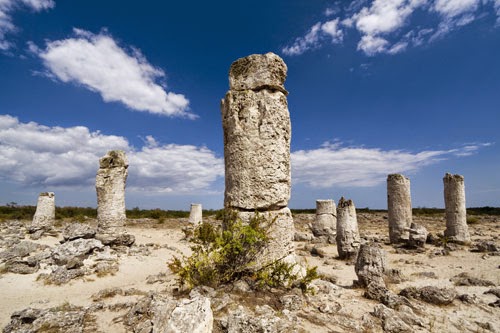Bulgaria's Stone Forest - a fascinating day trip from Varna

Bulgaria may be a great sun, sea and sand destination, but it also has its fair share of cultural and historical sites too. Holidaymakers keen to explore some of the surrounding area close to the popular Varna Resort may wish to visit Pobiti Kamani - an ancient stone forest dating back millions of years.
The site's name literally translates as 'hammered stones', as this phenomenon looks as if it has been created by giants driving the rock formations into the ground. In reality, it is not known how the stones, which are across seven kilometres of desert, came about, with many legends having arisen to explain their existence through the ages.
These ancient rock formations are shrouded in myth and mystery.
Ranging from 30cm to three metres in diameter, the hollow cylinders also vary in height, with some reaching up to seven metres tall.
Although being described as a forest, the arrangement does not appear natural and various theories have included the rocks being used as foundation stones for some kind of acropolis or temple. Since the god Poseidon is said to have lived in the Black Sea, some legends have suggested Pobiti Kamani could be the colonnades marking his seat in Atalntis.
Wandering around the site with friends or a loved one, it is fun to debate the relative merit of these theories among yourselves and even come up with some of your own. Over the years, individual stones have been given names by the locals, based on their pronounced characteristics. See if you can spot The Soldier, for example and work out what appropriate names the others may have been given.
Although described as a forest, the arrangement does not appear natural
Since 1828, tests have been carried out on the stones to determine a more scientific explanation to their origin. Over the years it has been established that the Black Sea once covered the site and the stones could in fact been created underwater.
It is now widely believed that a theory proposed by brothers Peter and Stefan Bonchev Gochev could be correct. They think limestone layers may have been formed through compression of sediment on the seabed. Gases released rose through the sludge, carving the limestone into columns, which were then revealed when the waters of the Black Sea subsided and the rock formations became a tourist site.
This is not proven, but one possible explanation. Either way, Pobiti Kamani is an interesting place to explore and hypothesise about.
